| April 19, 2010 |
More from Eyjafjallajokull
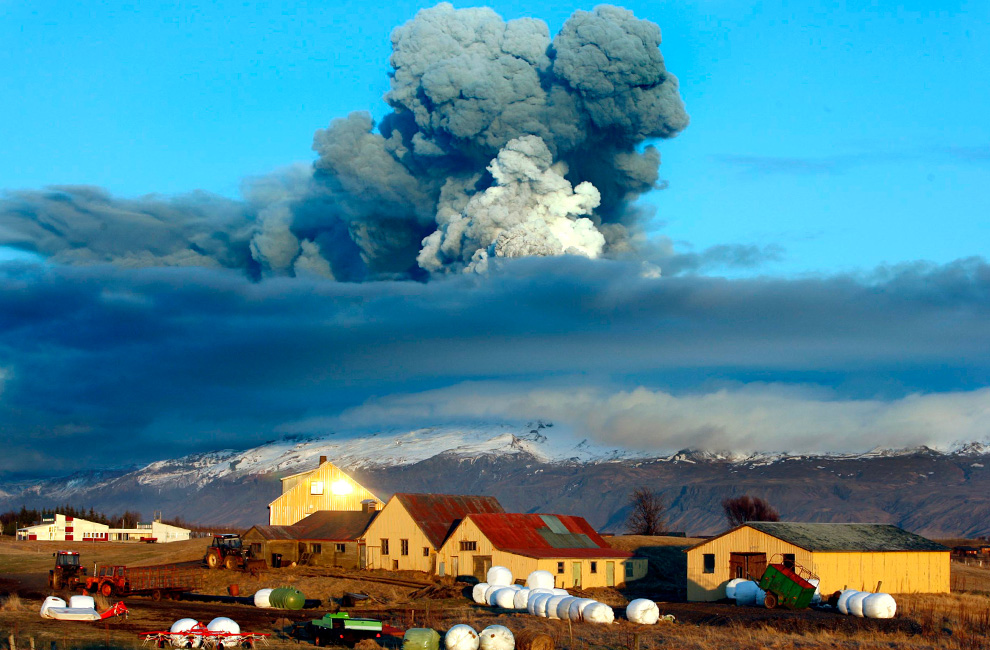
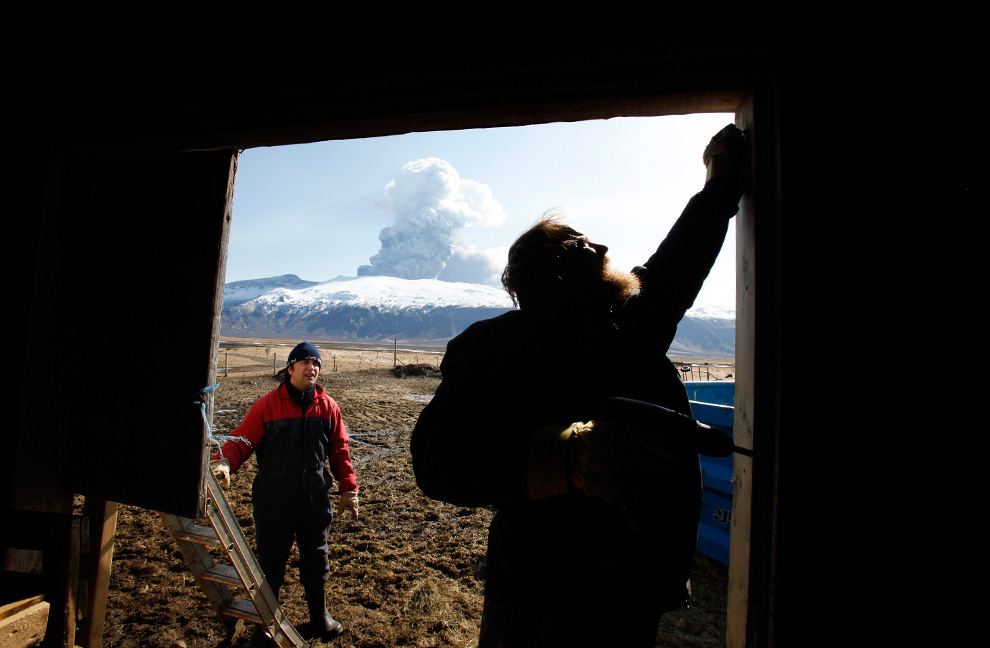
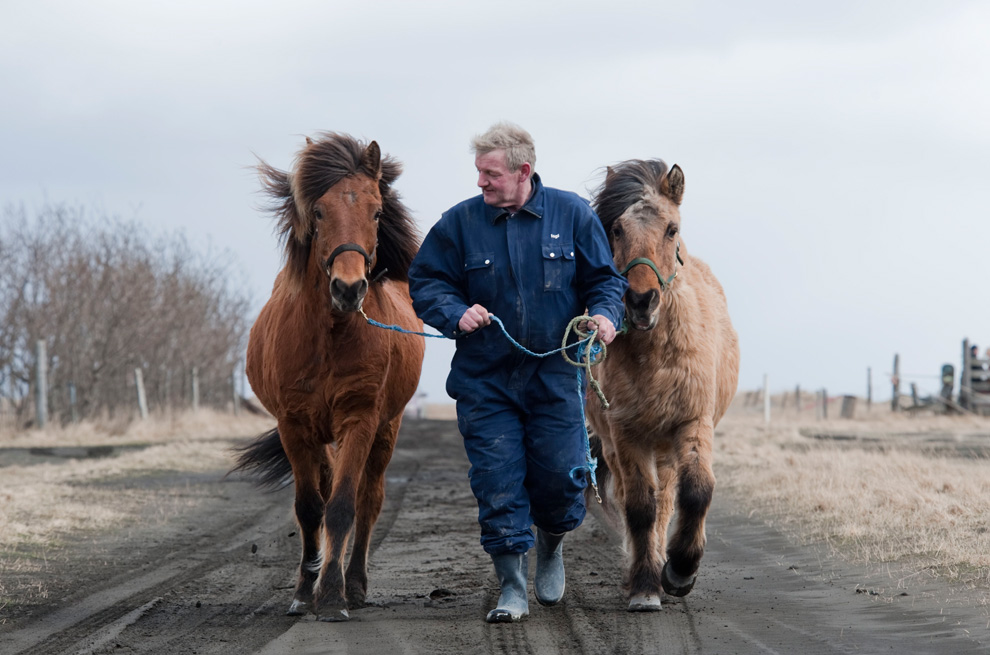

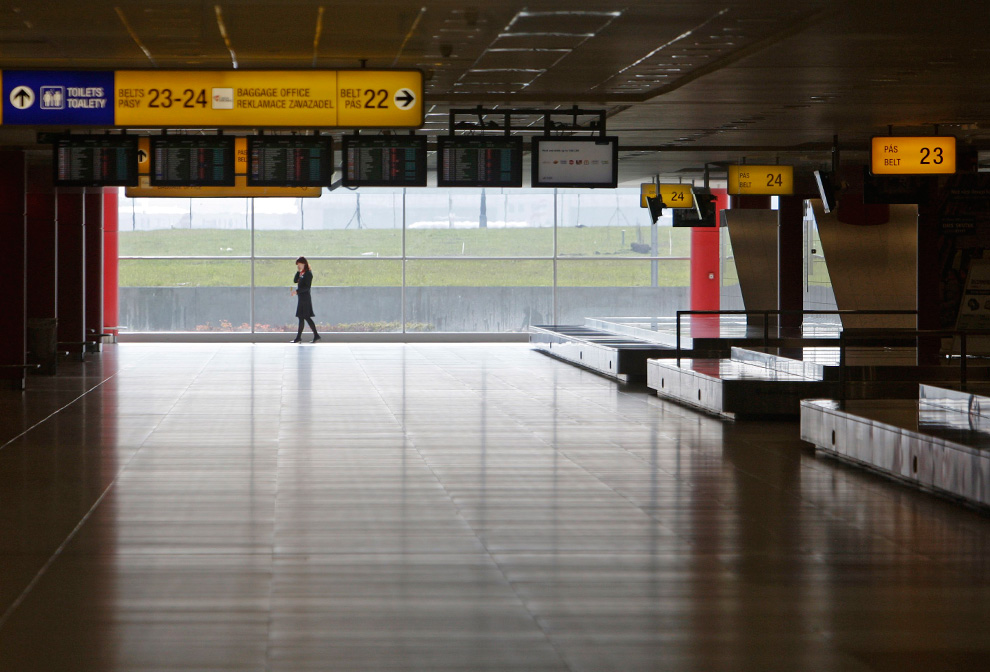
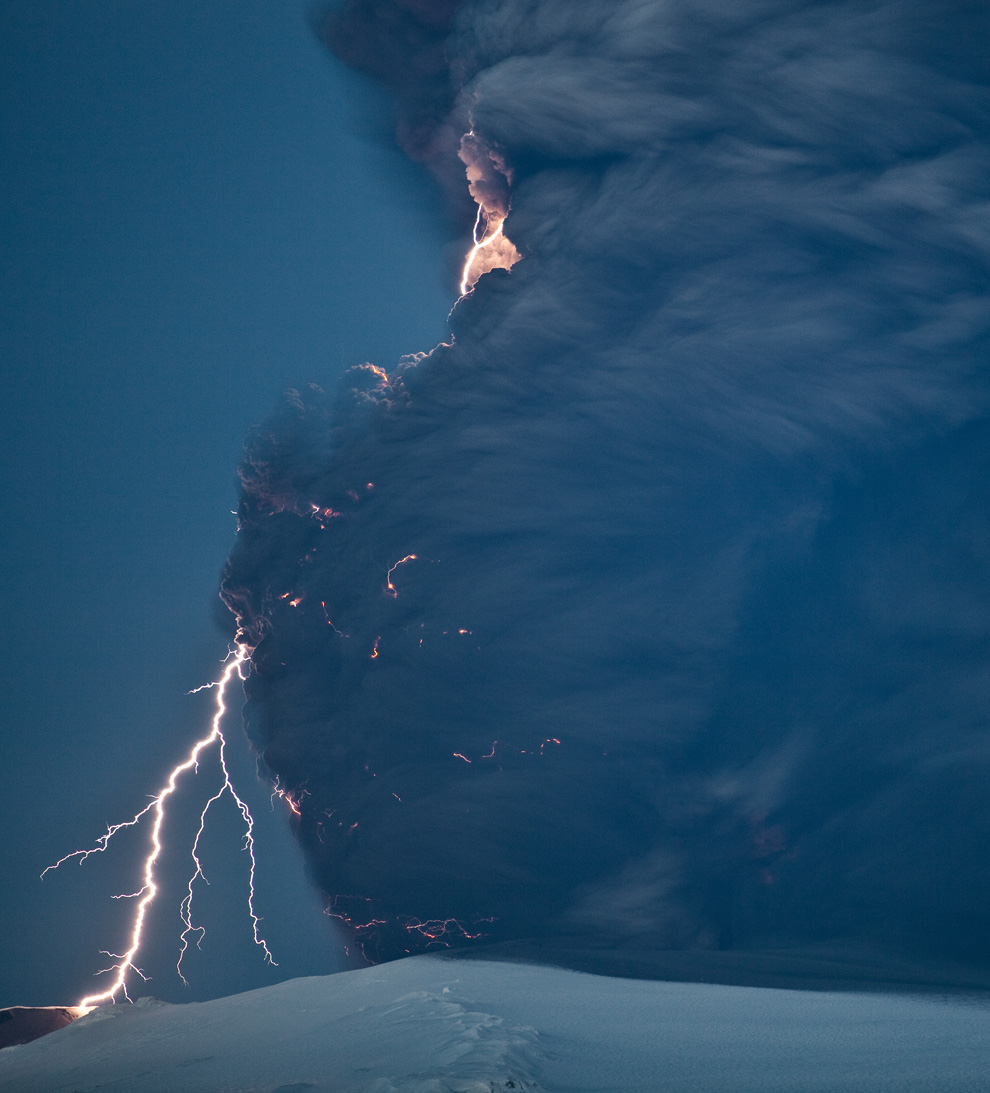
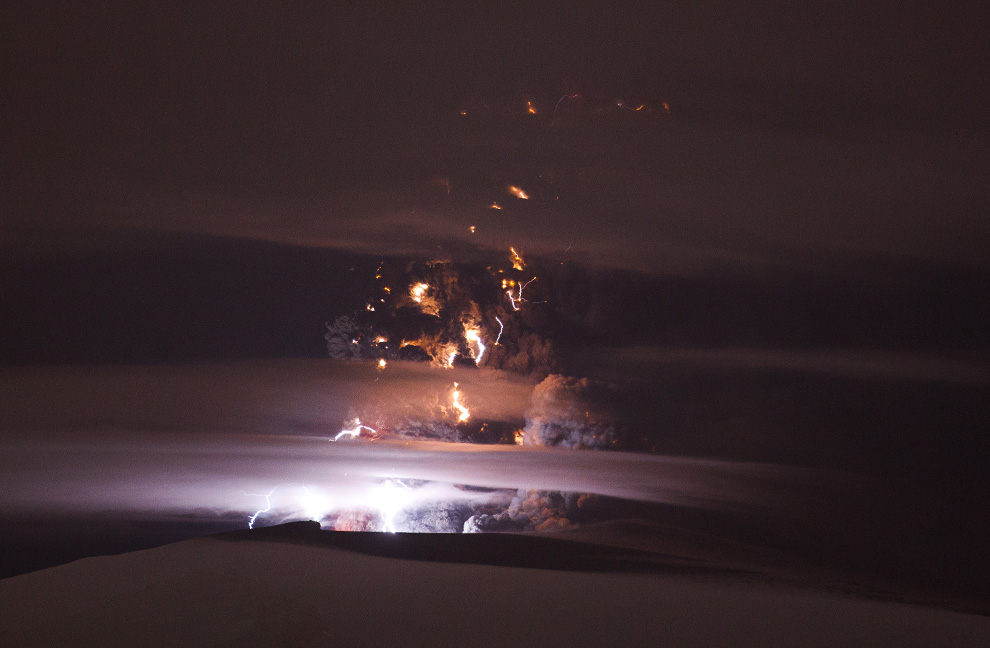
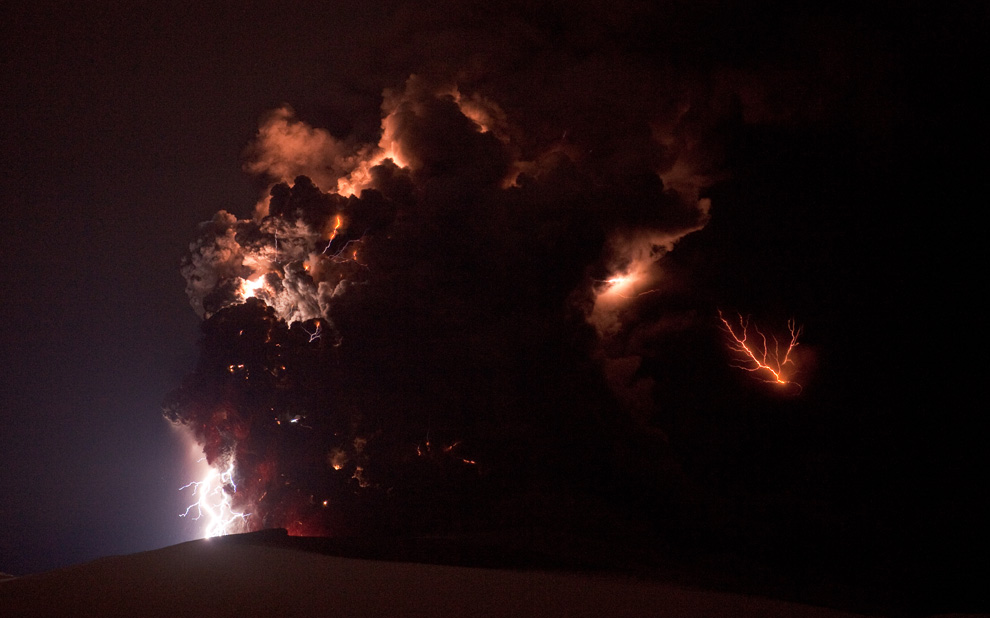
I have long had the idea that God created psoriasis and warts
to teach dermatologists the merits of humility.
(Vincent Joseph Derbes, 1981)
Facebook: VN Dermatology

Ehsani A et al. – A total of 30 patients including 15 males and 15 females completed the study. After eight weeks, 13 patients in the acyclovir group experienced complete response, while in the erythromycin group only six patients had complete response. Also, patients in the acyclovir group experienced faster resolution of pruritus in comparison with the erythromycin group (not significant). No adverse drug reaction was detected in both groups. It seemed that a high–dose of oral acyclovir was a safe and effective therapy for pitiriasis rosea, although this remained to be confirmed in larger studies.
Summary points, and will the new evidence change our clinical practice?
Professor Hywel Williams, Clinical Lead for NHS Evidence - skin disorders and Co-ordinating Editor of the Cochrane Skin Group, and Dr Kave Shams, Dermatology Registrar, Southern General Hospital, Glasgow
GUIDELINE
Food allergy: The US National Institute of Allergy and Infectious Diseases has produced extensive, high quality draft guidelines on the management of food allergy. The advice on food allergy is still limited by lack of clear definitions and a poor evidence base. The guidelines emphasise the importance of taking a good clinical history of food allergy before proceeding to skin-prick or RAST tests, and of the need to be aware of non-IgE mediated food allergy.
Action: We will continue to ask all our eczema patients (especially younger children) about symptoms suggestive of immediate and delayed food allergy to foods such as egg, milk, fish, citrus and nuts. We will not blindly order "allergy tests" on patients, as positive tests have a low predictive value.
CAUSES OF ECZEMA
Risk of cancer: Some evidence points to a possible reduced risk of glioma and acute leukaemia in people who have had eczema in childhood, the reasons for which are unclear.
Action: Given that most of our messages are doom and gloom, this observation of a possible health benefit of having eczema is perhaps worth mentioning to some parents who feel despondent about eczema.
Risk of multiple sclerosis: There is no clear evidence to support an increased or decreased risk of multiple sclerosis in eczema and other atopic diseases.
Action: None, especially as we were not aware of the possibility of an association in the first place.
Attention deficit hyperactivity disorder (ADHD): Although some cross sectional studies suggest a possible association between reported eczema and ADHD, we are not convinced it is a true association at this stage and large prospective studies are needed to disentangle cause and effect.
Action: We shall be cautious accepting that children who are restless because of undertreated eczema have ADHD. We shall treat the underlying eczema aggressively and see how the behaviour improves.
Living in the city: Most studies in developed countries looking at whether eczema is commoner in urban as opposed to rural locations suggest an increased risk of disease expression in urban areas.
Action: The evidence is not strong enough to recommend our patients to move to “a place in the country”.
PREVENTION
Hydrolyzed milk formulas: Although a recent systematic review sponsored by the manufacturers of hydrolyzed milk formulas has suggested that partially hydrolyzed formulas from birth may prevent eczema to some degree, compared with standard cow’s milk formula, we would like to see an independent Cochrane Review update on this topic.
Action: We will continue to advise parents that breast-feeding is the most effective and appropriate method to nourish infants, and that mothers who cannot breastfeed can use conventional formula milk. If their child does develop cow’s milk allergy, then a hydrolyzed milk formula is appropriate.
Organic foods: There is no robust evidence that consumption of organic foods reduces the risk of eczema. One cohort study from the Netherlands has suggested that consumption of strictly organic dairy products may reduce eczema risk in infants, a finding that needs to be tested in new studies.
Action: We will not be recommending organic foods during infancy if parents do not choose to buy them.
Fish oils for pregnant mothers: Observational and intervention studies evaluating increased fish intake or fish supplementation during pregnancy suggest a possible reduction in subsequent eczema prevalence and severity.
Action: Although the evidence is not strong enough yet to inform guidelines, the possibility of increasing fish intake or of fish oil supplementation during pregnancy may be something to discuss with families with allergic disease, given the safety and other health benefits of fish oils.
Fish oils for infants: The evidence to support increased fish intake or fish oil supplementation in infant diets to prevent or reduce the severity of subsequent eczema is not so strong.
Action: Hold off the extra fish fingers for now.
ECZEMA TREATMENT
Food allergy: A very large, well conducted systematic review on food allergy has highlighted the confusion around the topic. The review calls for clearer definitions of food allergy, and for standardisation in testing methods and quantification.
Action: We shall continue to consider the possibility of food allergy in those with eczema, especially in infants, but we remain unclear about the best method of diagnosing such food allergy.
Bath emollients: Although few would question the value of emollients in the dry skin associated with eczema, the evidence showing any additional value of bath emollients is questionable because they may never achieve an adequate emollient concentration, much ends up down the drain rather than on the skin, and their use may divert attention away from direct application of emollients in the belief that the bath emollient has done the job.
Action: Whilst we would not actively stop a child from using bath emollients if they like them, we recommend more attention is paid to direct application of emollients after bathing rather than what is put in the bath.
Topical tacrolimus and pimecrolimus: Some comparative efficacy evidence shows that both 0.03% and 0.1% tacrolimus ointment is more effective than 1% pimecrolimus, with a similar range of short-term adverse events.
Action: It is still unclear whether 0.03% tacrolimus is any better than pimecrolimus. We will continue to use either for children with eczema within their licensed indications, and swap from one to the other if the child fails to notice any benefit or reports troublesome burning which lasts more than a week.
Silk clothing: Two small studies have evaluated specialised silk clothing for children with eczema. No clear positive findings were shown and both studies had significant flaws.
Action: We do not recommend that parents are advised to purchase silk clothing for children with eczema and we really need some better studies addressing this issue. If children with eczema try silk clothing and like it, then it is up to families whether they buy it.
Bandages: The evidence base for occlusive therapy with dry or wet-wrap bandages with or without emollients or topical corticosteroids is increasing, but the studies still differ too much in terms of who is studied, and how the occlusive therapy is used, to make any strong recommendations, especially with regards to dry bandages. Wet-wraps as an adjunctive treatment for refractory eczema appear to be useful, but concerns about skin infection and the clinical significance of enhanced absorption of topical corticosteroids require bigger and better studies.
Action: We will continue to use wet-wrap bandages over topical corticosteroids for short periods of up to one week for acute flares of uninfected and heavily excoriated limb eczema that does not respond to conventional topical corticosteroids and emollients.
Antistaphylococcal interventions including bleach baths: There is still no clear evidence that anti-staphylococcal treatments are useful in eczema.
Action: We will continue to use short courses of oral antibiotics for children with overtly infected eczema. We will not use or recommend topical corticosteroid/antibiotic combinations, antibacterial or silver textiles, bleach baths or long term antibiotics in people with clinically infected or non-infected eczema until better evidence becomes available.
Department of Dermatology, SMS Medical College, 103, Burmese Colony, Jaipur-302004 (Rajasthan), India, CGHS, Jaipur (India)103, Burmese Colony,Jaipur-302004 (Rajasthan),India.
Continued sub-clinical streptococcal infection might be responsible for chronic plaque psoriasis. Considering the beneficial effect of benzathine penicillin in chronic plaque psoriasis, but due to the risk of penicillin sensitivity and to its painful parenteral route of administration, we tried oral azithromycin in this single blind randomized case-control trial. 50 patients with moderate to severe chronic plaque psoriasis were enrolled. Of these, 30 randomly selected patients received azithromycin for 48 weeks as a single oral 500 mg daily dose for 4 days with a gap of 10 days (total 24 such courses). The remaining 20 patients received a vitamin C tablet (non-chewable) in the same dosage schedule. Informed consent was obtained from all patients enrolled. Though the trial concluded at 48 weeks, patients in the azithromycin-arm were followed for another year to observe any relapse. A significant improvement in PASI score was noted from 12 weeks in the majority of patients in the azithromycin group. At the end of 48 weeks, 18 patients (60%) showed excellent improvement, while 6 patients (20%) showed good improvement and 4 patients (13.33%) showed mild improvement. PASI 75 was 80%. No significant change was seen in lesions in the control group. 2 patients in the study group and 5 patients in the control group did not complete the prescribed duration of study. An exacerbation in lesions was reported in 5 cases (16.66%) in the group receiving azithromycin. These exacerbations also responded by continuing the same treatment. At the end of another one year follow up in the azithromycin-arm, 6 patients (20%) developed a recurrence of lesions. Relevant investigations and clinical assessments were done at regular intervals to observe any side-effects and to check progress of the disease. Data were analysed statistically by using the student t-test. Patients tolerated the therapy well.
PMID: 20299307 [PubMed - in process]
Dermabrasion is a technique that uses a wire brush or a diamond wheel with rough edges (called a burr or fraise) to remove the upper layers of the skin. The brush or burr rotates rapidly, taking off and leveling (abrading or planing) the top layers of the skin. This process injures or wounds the skin and causes it to bleed. As the wound heals, new skin grows to replace the damaged skin that was removed during dermabrasion.
Factors that affect the depth of the resurfacing include how coarse the burr or brush is, how quickly it rotates, how much pressure is applied and for how long, and the condition and features of your skin.
The face is the most common site for treatment, but other areas of the skin can be treated as well. Dermabrasion is used most often to improve the appearance of acne scars and fine lines around the mouth. It also may be used to treat an enlarged nose (rhinophyma) caused by rosacea, an inflammatory skin condition.
The areas to be treated are cleaned and marked. A local anesthetic (such as lidocaine) is usually used to numb the skin before treatment, and ice packs are applied to the skin for up to 30 minutes. A freezing (cryogenic) spray may sometimes be used to harden the skin for deeper abrasions if the anesthetic and ice packs do not make the skin firm enough. For deep abrasions, or if the entire face is going to be treated, you may need stronger anesthesia, pain killers, sedation, or general anesthesia.
One small area at a time is treated. The freezing spray (if needed) is applied for a few seconds and then the rotating burr or brush is used to take off the top layers of skin. Gauze is used to stop any bleeding, and the area is covered with a clean dressing or ointment.
Dermabrasion is almost always done in your doctor's office or on an outpatient basis.
Your recovery and healing time after dermabrasion depends on the size and depth of the area that was treated. Someone who has a full-face dermabrasion, for example, will require a longer recovery time than someone who has just a small area of skin treated. Deeper abrasions take longer to heal.
In general, regrowth of skin occurs within 5 to 8 days. This new skin is a pink or red color, which usually fades within 6 to 12 weeks. Until then, your normal skin tones can be achieved using makeup.
Many people have little or no pain and can get back to their regular activities soon after the procedure. Some people require pain relievers. If swelling occurs, a corticosteroid such as prednisone may be used to reduce the swelling.
Proper care of the treated area while the skin is healing is extremely important. This involves:
You may be given an antiviral drug called acyclovir to prevent infection if you have a history of infection with the herpes simplex virus.
Several follow-up visits to your doctor may be needed to monitor the skin's healing and regrowth and to identify and treat early signs of infection or other complications.
Dermabrasion is used to treat damage and defects in the upper layers of the skin, such as:1
You may not be a good candidate for dermabrasion if you:
Your skin type, the condition of the skin, your doctor's level of experience, the type of brush or burr used, and your lifestyle following the procedure can all affect the short-term and long-term results. Some types of skin problems or defects respond better to dermabrasion than others. People with lighter skin who limit their sun exposure after the procedure tend to have better results than those with darker skin and those who continue to spend lots of time in the sun.
In general, dermabrasion results in a smooth, even skin texture and gives scarred skin a more uniform appearance.
The removal of scars, growths on the skin, and tattoos using dermabrasion is permanent. However, changes in the color and texture of the skin caused by aging and sun exposure may continue to develop. Dermabrasion is not a lasting fix for these problems.
Common temporary side effects of dermabrasion include:
Less common complications may include:
Dermabrasion wounds and destroys the skin. You need to prepare yourself for how your skin will look immediately after treatment and throughout the healing process. It is also extremely important for you to follow your doctor's instructions on caring for your skin after the treatment so you can avoid infection and help your skin heal properly.
Be sure that your doctor understands what you hope to achieve and that you understand what results you can realistically expect. Do not expect a 100% improvement. In general, a 50% improvement in the skin condition is considered a good result. Even with realistic expectations, you may not see results for several weeks or months after dermabrasion.
After dermabrasion, you will need to wear sunscreen every day and avoid sun exposure as much as possible. New skin is more susceptible to damage and discoloration from sunlight.
Dermabrasion, chemical peel, and laser resurfacing are the most commonly used techniques for improving the texture and appearance of the skin. Although these techniques use different methods, they have basically the same effect on the skin-they destroy and remove the upper layers of skin to allow for skin regrowth.
No one technique is necessarily better than the others. When performed by an experienced surgeon, laser resurfacing may be slightly more precise than dermabrasion or chemical peels. Laser treatment also tends to be more expensive than dermabrasion or chemical peeling. In general, the choice of technique is based on the site you want to treat, your skin type and condition, the doctor's experience, your preferences, and other factors. Some people may get the best results by using a combination of techniques.

| April 19, 2010 |








We are 12 interesting people!
Class: Level-one dermatologistSchool year: 2004-2006
The University of Medicine and Pharmacy at HCMC, VN| Medical Abbreviations | |
|